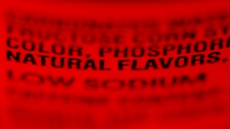Turf grass may be an attractive groundcover for homeowners but it doesn't hold much appeal for pollinators.
Add some broadleaf plants with flowers to the mix, however, and it's a different story: great forage for the birds and the bees. Lower maintenance, too.
"Bee lawns aren't 100 per cent flowers. They have some grass included," said Mary Meyer, an extension horticulturist and professor with the University of Minnesota. "While bees don't use grass, humans do. Most flowers, if you start walking on them, will die. Clover will tolerate a bit of foot traffic."
Nitrogen-rich Dutch white clover generally is considered the best companion to cool-season lawn grasses when the objective is attracting pollinators, said Mace Vaughan, pollinator program director for The Xerces Society for Invertebrate Conservation in Portland, Oregon. "You can mow it and keep it relatively tame in a lawn, and bees love it," Vaughan said. "The good thing about Dutch white clover is that it is good (to grow) across most of the U.S."
There was a time when many turf seed mixes included clover. Then came the rise of lawn purity: Yards were designed to look like the manicured greens on a golf course. All grass. No broadleaf plants.
These formalized landscapes were attractive but contained little food value for foraging honeybees.
Now that clean lawn ethic is giving way to herb and vegetable gardens, a desire for minimal yard maintenance and concerns about steep declines in pollinating insects. People are opting for smaller lawns, blended lawns or no lawns.
"The trend is urban meadows, where homeowners take out their lawns and replace them with diverse wildflowers that can get tall and rangy at the end of the season," Vaughan said. "But a nicely mown border around the outside keeps them looking tidy. Add a sign and people know you're doing it on purpose. Mow in the fall and the whole lawn is cleaned up nicely."
Other flowering broadleaf plants include dandelions (which bloom early when little else is flowering), lamium (shade-tolerant) and thyme.
Some property owners convert less visible sections of their yards into bio-diverse bee lawns.
"Reserve some chunks," Meyer said. "Devote your back lawn to a bee lawn and leave your front lawn traditional turf — the part that your neighbours and passing traffic see."
"For people who still want that green carpet look, try it with clover," Meyer said.
Are flowering broadleafs invasive weeds or beneficial grass companions? It depends on your esthetics. But no matter how they're viewed, they require less care and less fertilizing, and are more resilient to drought and pests than traditional turf grass.
"I've seen some beautiful mats of thyme that are mowed and attract many, many bees," Vaughan said. "Small varieties of yarrow are OK, but don't attract a lot of bees. Other pollinators come to the yarrow."
University of Minnesota researchers are trying to come up with pollinator lawn-seed combinations that use native plant species — low-growing, non-invasive varieties that can take a lot of abuse.
"That's a heavy order," Meyer said, "but they're doing trials. Next year they'll be planting demo plants to see how they flower and survive."





